Would you want to learn how to clean a juicer in the most effective and time-saving manner possible? Take a look at this thorough tutorial, which will teach you all you need to know about cleaning your juicing machine!
Few things compare to drinking fresh fruit juice straight from a juicer. You can get juiced for health reasons or to enjoy the taste.
The high amount of micronutrients provides a variety of advantages, including increased immunity, better energy levels, and enhanced mood.
The condition of its components determines each juicer’s performance. That is why it’s important to care for the gadget properly, and cleaning is an essential component of that upkeep process.
You’ll learn everything you need to clean your juicer in this post. Whether dealing with stubborn stains or figuring out how to clean your device effectively, you’ve come to the correct spot!
Table of Contents
What Is a Juicer and Why Would You Need It?
A juicer is a kitchen device that can extract juice from fruits and vegetables. The working procedure is dependent on the juicer type, so we often distinguish them into two broad categories: electric and manual juicers.
Here are some of the most popular juicer sorts:
- Citrus juicers – You may also come across reamer in your area. Their job is to get juice from citrus fruits, such as oranges, limes, lemons, and grapefruit.
- Centrifugal – These juicers use a high-powered motor and a sharp blade to extract the juice.
- Masticating – These juicers are different from the previous sort in that they operate slowly and employ an auger to extract the juice from fruits and veggies. This is the case since they retain more vitamins than centrifugal machines.
- Triturating – Masticating citrus press juicers are similar to cold press juicers in that they employ two augers and a comparable operation.
It makes no difference what type you pick; the basic function of a juicer remains the same. It is designed to make fruit and vegetable juicing more accessible and enjoyable by reducing needed effort.
Why Is a Clean Juicer essential for Your Health?
Juicers are used frequently by juicing enthusiasts. Some people like morning juice, but many individuals use the gadget several times a day. It’s understandable since the nutrients in these drinks help us have more energy and improve our general health.
By keeping your juicer clean, you ensure that it continues to function at its best. You’ll be able to get the most nutrients out of the device when you follow this procedure. Furthermore, if the appliance is filthy, it may cause stomach discomfort.
Depending on the juicer, these devices may process tiny and big pieces of fruit and vegetables. However, the juice pulp and other small components that make up the most issues are also responsible.
These parts get into difficult-to-reach areas and degrade the performance of your equipment. You’ll get the most juice from your machine and maximize its health advantages by cleaning everything.
Step by Step Guide to Clean a Juicer
Here’s a helpful hint: If you clean your juicer on a regular basis, you’ll save time and effort in the long run. It may be time-consuming to remove and clean everything each time you prepare your preferred beverage, But I trust it will be worth it.
You won’t have to deal with difficult stains and residue as often; not only will you make sure the appliance is clean, but you won’t have to. The primary cleaning method means that your juicer will only need to be cleaned at the end of its useful life.
You’ll need the following materials for the standard cleaning procedure:
- A toothbrush (although a nail brush will also do)
- A couple of soft clothes
- Spatula
- Water
- Soft brush
- A dish soap (preferably a mild one)
Follow these steps once you’ve completed all of this.
Step 1: Switch Off and Unplug the Appliance
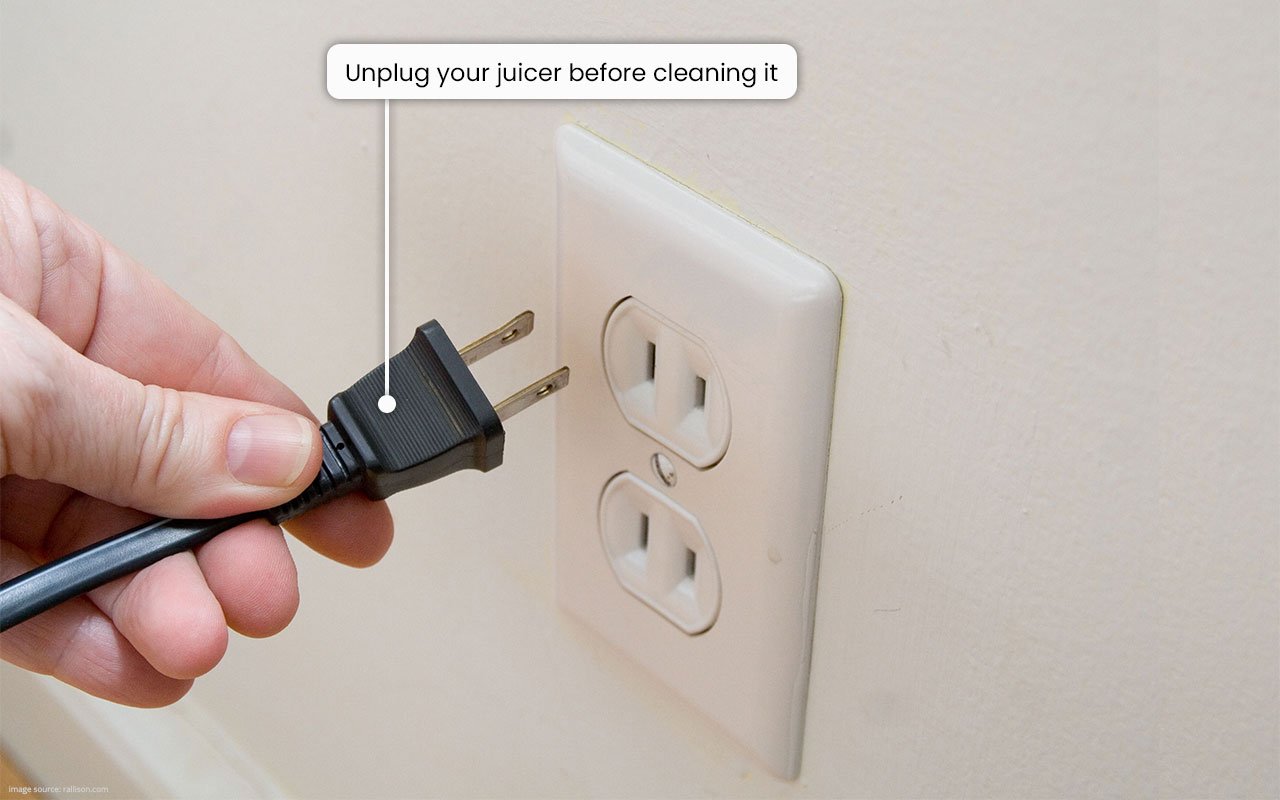
While your juicer is plugged into a power outlet, you should never clean it. These machines also produce a lot of heat, which can cause fires, injuries, and other incidents due to power surges. Make sure you unplug the wire. Please don’t be hesitant to double-check because it’s so crucial.
Step 2: Detach the Removable Components
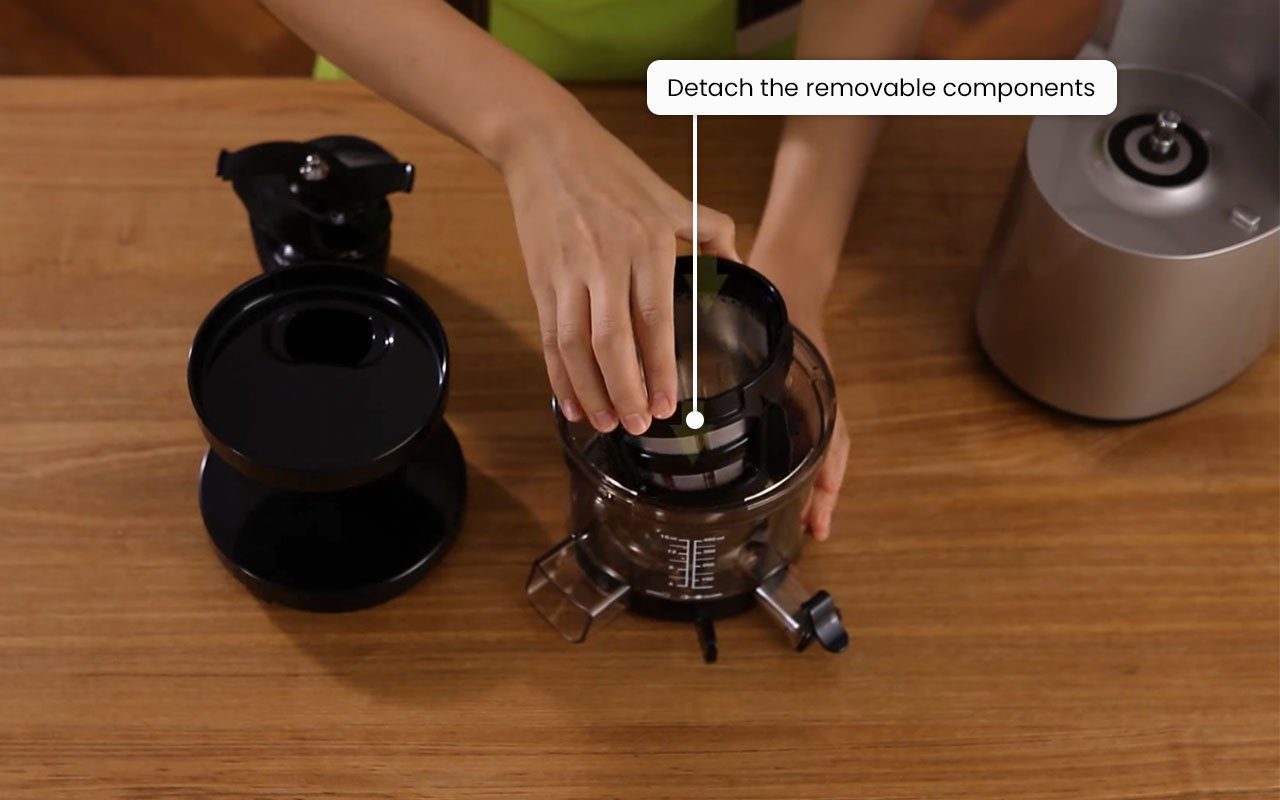
Chances are, at least some of your juicer’s components can be removed. That’ll be determined on the appliance, but look at the instruction booklet to see whether detachable components need to be removed.
Disassembly aims to get to hard-to-reach spaces and inaccessible locations that you won’t be able to clean using the standard method.
Step 3: Throw Away the Pulp
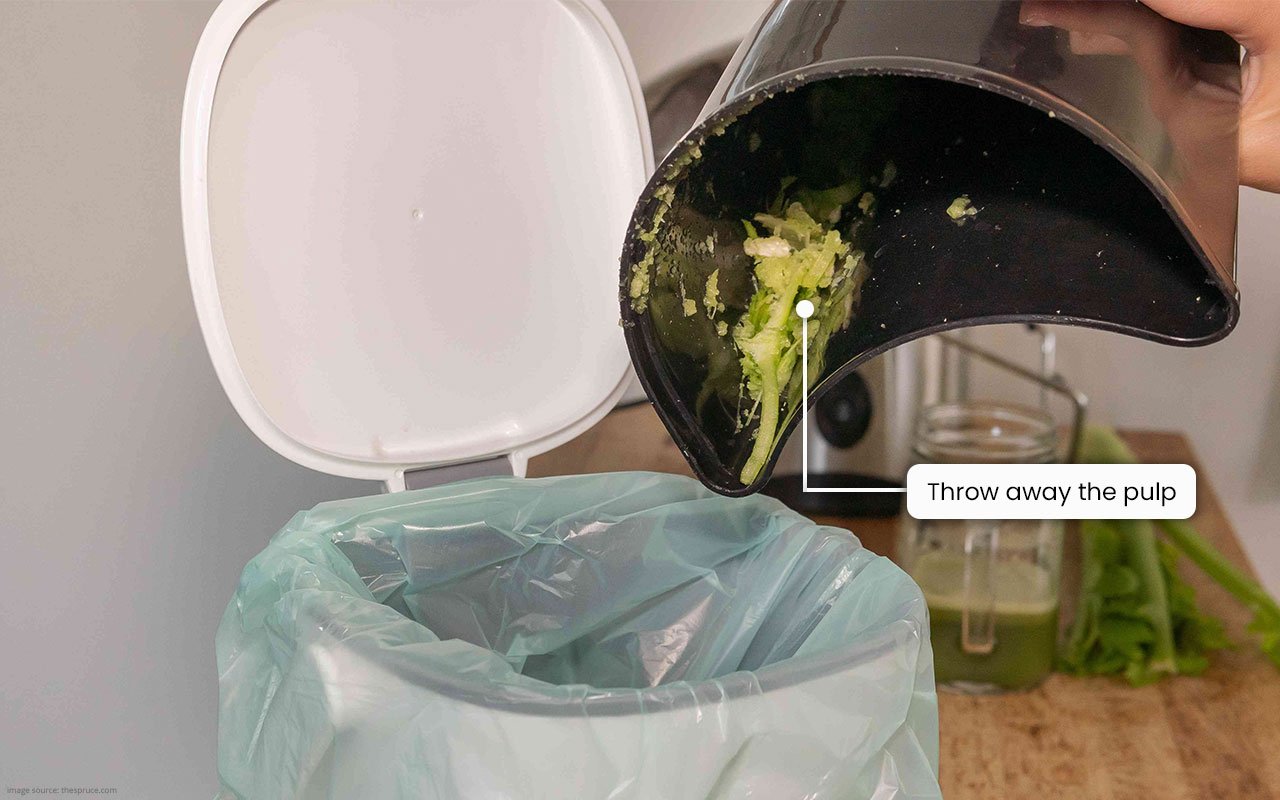
The device divided the pulp into a separate container while processing the juice. It’s time to get rid of that pulp now. Using a spatula is the simplest method to accomplish it.
You want to be thorough since the pulp may adhere to the inside of the container. At this point, the spatula is your best friend, so make sure there is no residue.
Fill the container with warm water and mild dish soap to clean it. You want to go over every single detail so that you can be happy with the result. If you can’t remove many difficult residues, it’s time for a deep-cleaning procedure.
Step 4: Wash Other Components
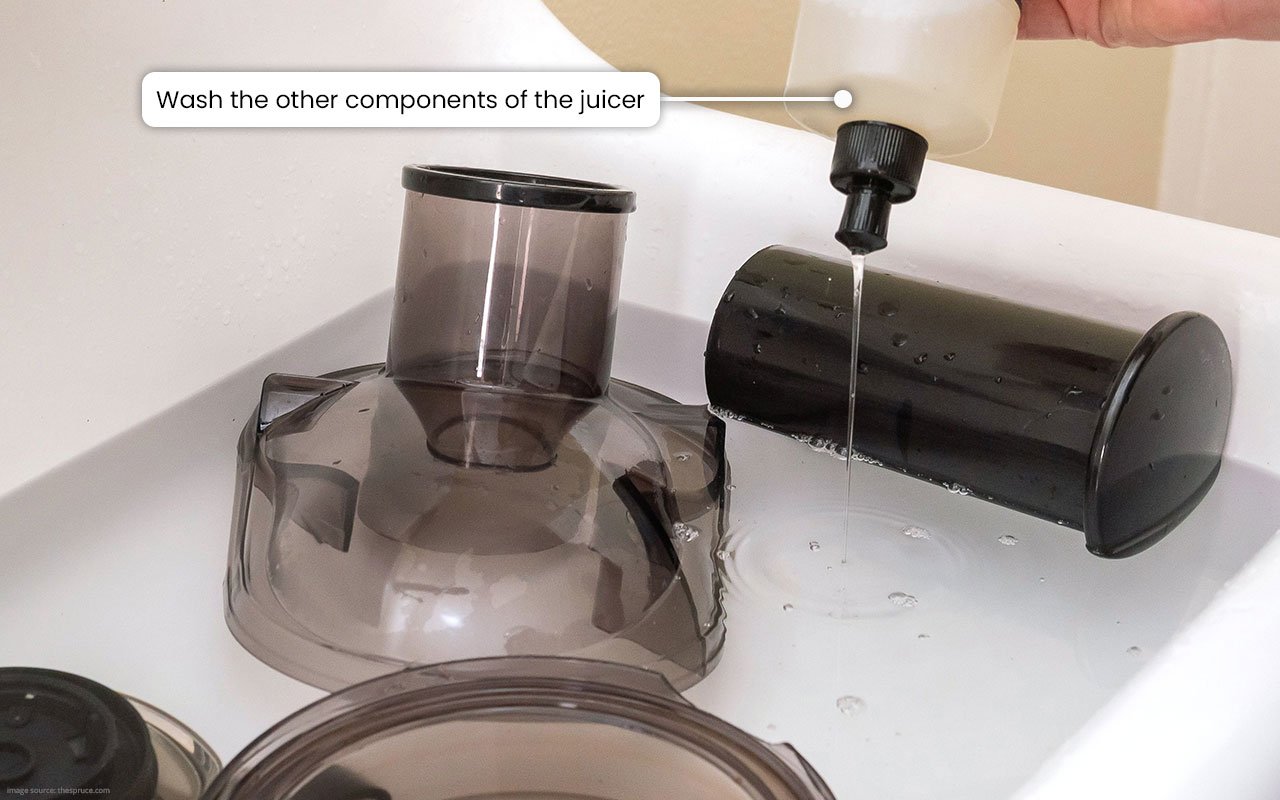
You began the washing process with the pulp container, and now it’s time to move on to additional components. It’s critical to go above and beyond. I recommend using dish soap, but be careful. Many components are delicate, so you don’t want any scratches or damage to the parts as they come into contact with the sink.
Don’t forget to wash each component several times. You don’t wanna take a chance on your juice tasting or smelling like soap. Use warm water or lukewarm, and be patient during each stage. Your mesh strainer, in particular, should get your full attention. Some pulp may stick in the gap.
Step 5: Using a Toothbrush to Clean the Components
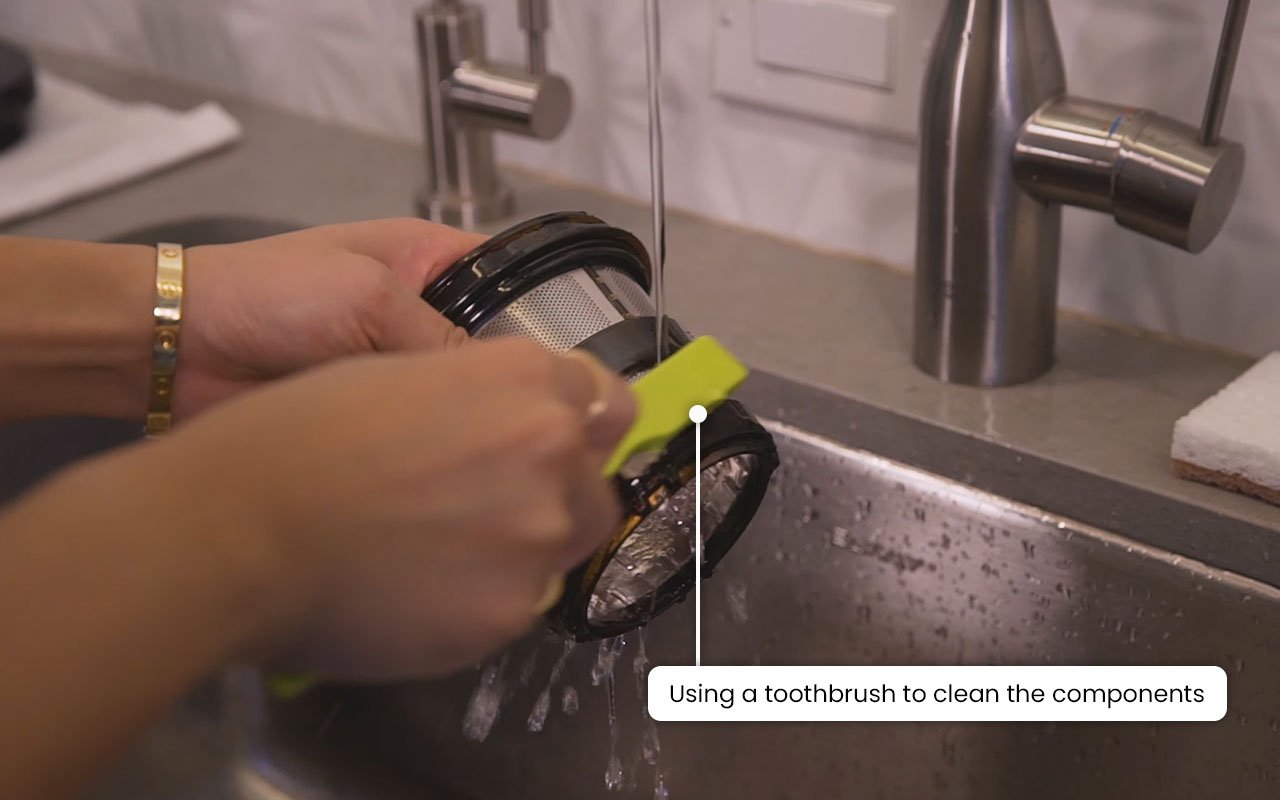
Some manufacturers may provide a specific cleaning brush. Use it as you wish, but a toothbrush is an excellent substitute if you don’t have one. You may also use a nail brush, but it will become your juicer cleaning brush afterward.
The goal of using a brush is to get to those hard-to-reach locations. You might as well try using your hands, but you’re unlikely to be able to touch every part of every component.
Step 6: Wipe the Remaining Components
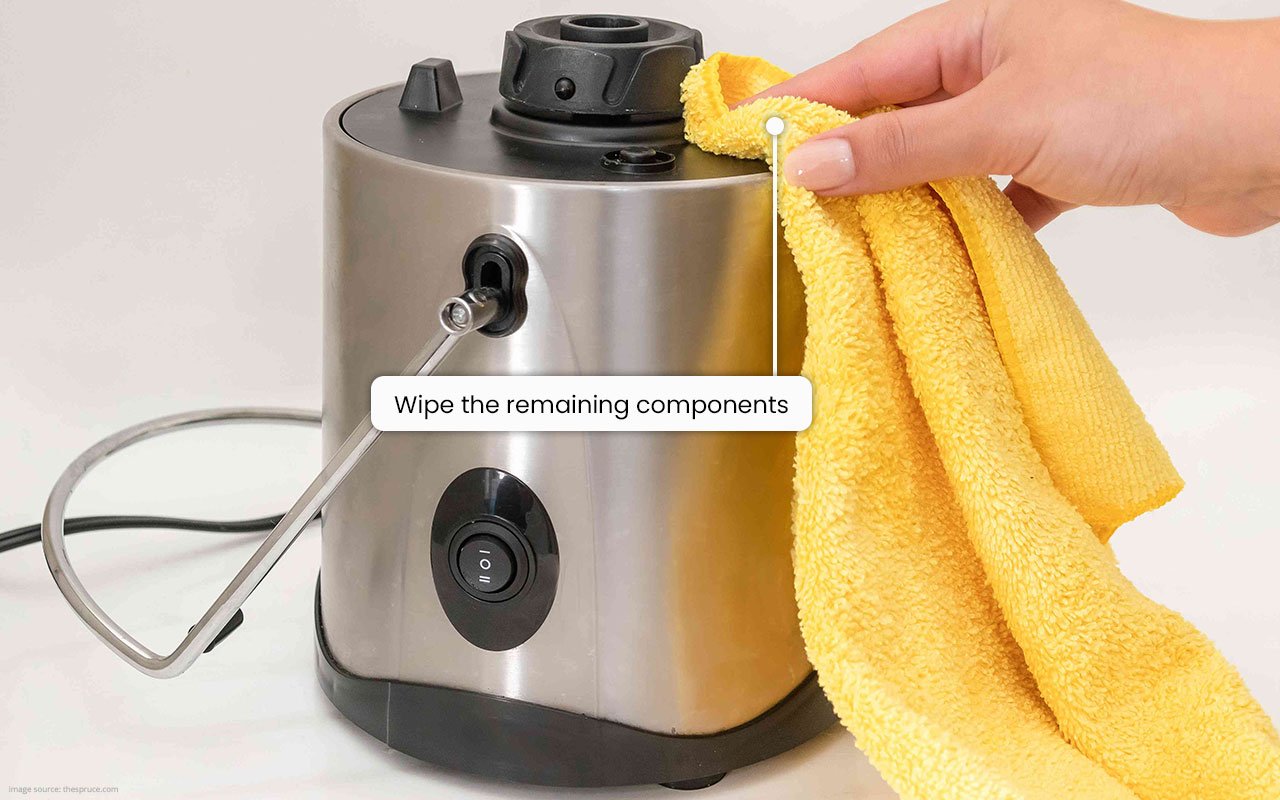
It’s time to pay attention to the juicer’s components that aren’t detachable. However, it’s crucial to remember that you can’t wash these elements in running water. It’s due to fear of damaging the gadget’s motor, power cable, or other critical components.
However, a gentle cloth or a slightly damp sponge may also be utilized. In my experience, a dampened, soft cloth is the most effective way to remove residue because it can’t get too wet like a sponge.
It is also critical to clean the entire foundation and not miss a single location. Use delicate pressure and be patient while wiping any dust or debris away.
Step 7: Wait Until All Components Dry
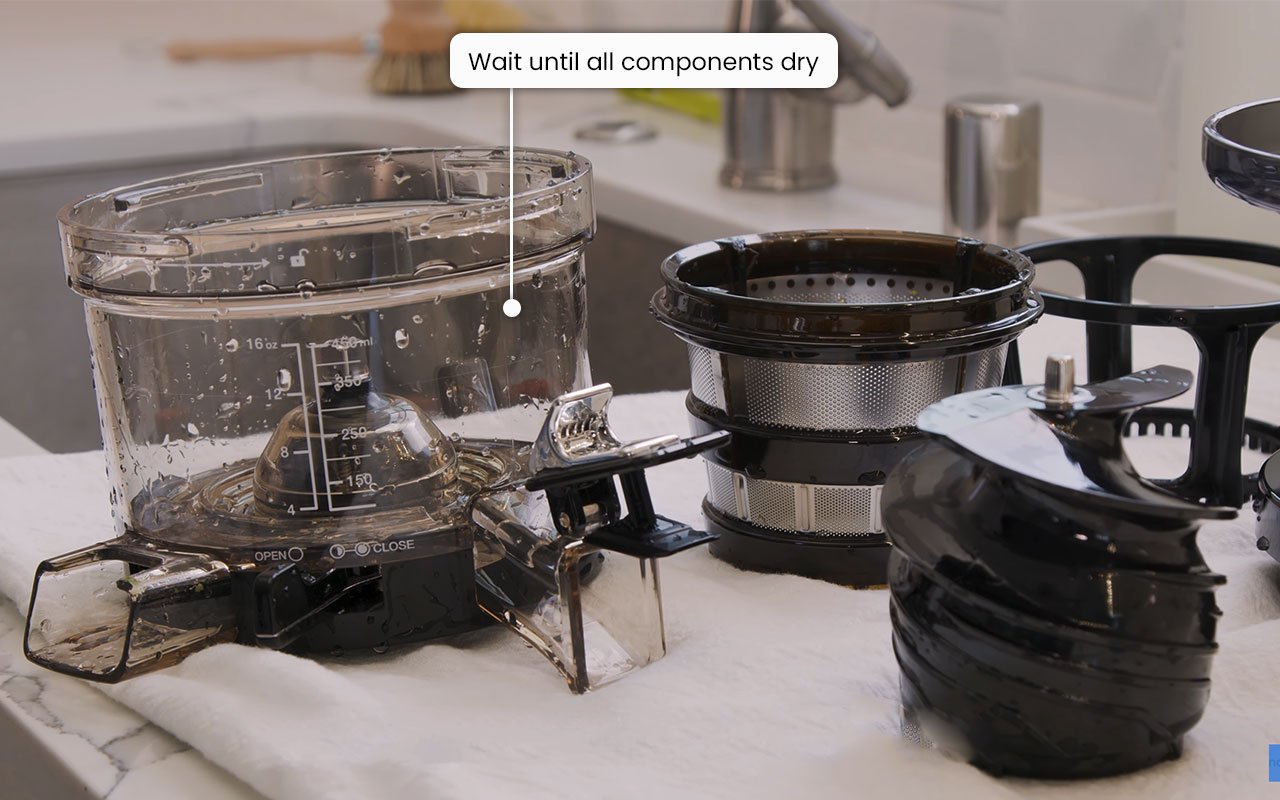
A drying rack should be placed near your sink. Then you can put all the components you cleaned on the rack in this manner.
Alternatively, you may lay a towel on the kitchen counter and allow the components to dry. It would be best to let the base have plenty of time to dry, but you don’t have to set it on the rack or wrap it in a towel.
Step 8: Reassemble the Appliance
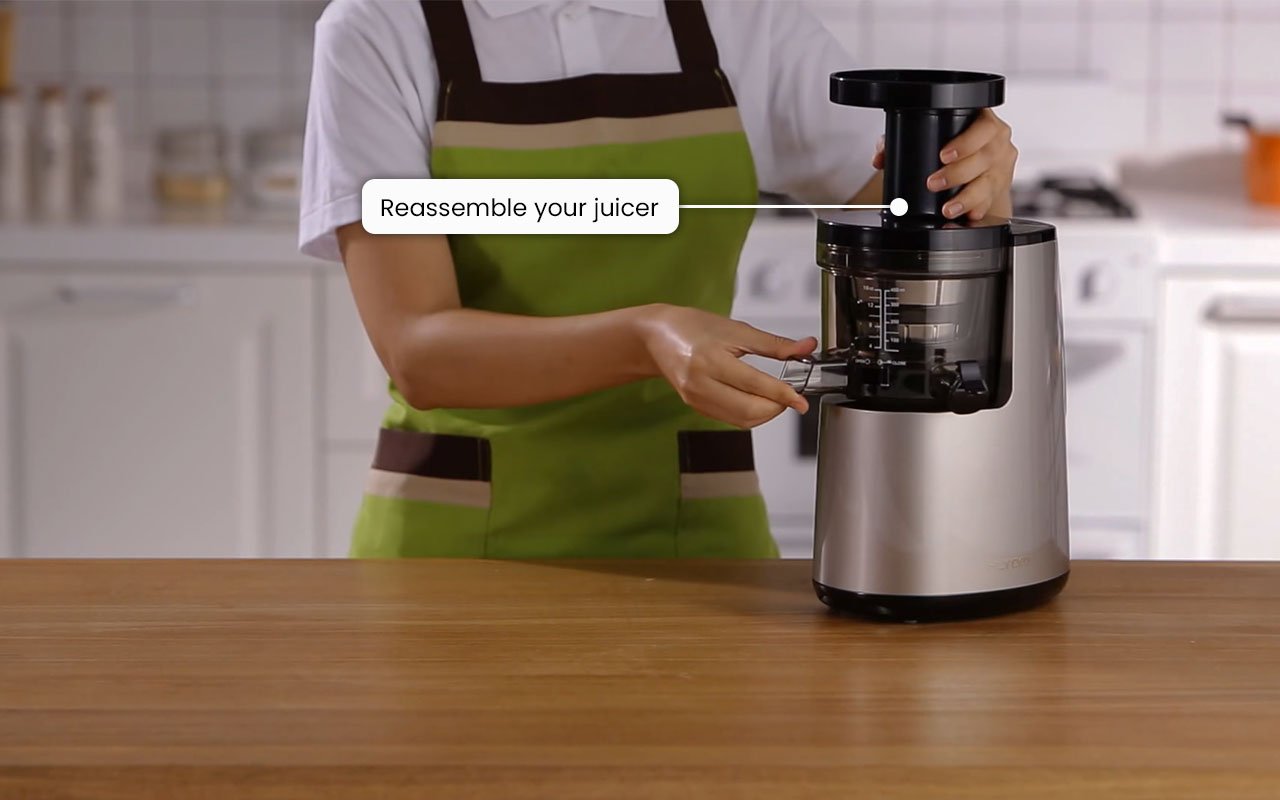
You can begin reattaching the components if you’re sure they’re completely dry. Consult the instruction booklet if you’ve misplaced a component and don’t remember where it belongs.
That’s much better than attempting to push a component into the incorrect location, which may damage the entire structure. Once everything is lined up, you can start the juicing process again.
The whole cleaning procedure should not take more than 10-15 minutes. It may take more or less time and depends entirely on the product.
If you want the most profit from a basic cleaning procedure, clean the device as soon after juicing as possible. If you use this technique, the residue will not have time to build up, and it will be simple to get rid of any dirt.
The methods outlined above may be used with any juicer, including masticating, centrifugal, and other appliances. However, your product’s instruction manual may contain thorough cleaning instructions for your specific equipment.
How to Clean Tough Stains on Your Juicer
If you’ve performed the fundamental cleaning procedure several times, you may notice that the outcomes aren’t as good. The gadget is not entirely clean, with some visible stains and residues.
Fortunately, there is a technique for elevating your cleaning performance to a new level. If you’ve been juicing for a long time, it’s crucial to deep-clean your machine regularly (every few weeks or so) and when you don’t clean the appliance for hours after juicing is completed.
The steps below will show you how clean your juicer’s filter and screens and remove existing stains and residues.
Let’s begin by looking at what materials you’ll need:
- Salt
- Water
- A spray bottle
- Bowl
- Milk
- White vinegar
- Denture tablets
- Enzyme dish liquid
Have you completed your preparations? That’s excellent. Here are the actions to take during the procedure.
Step 1: Switch Off and Unplug the Device
This is an essential safety precaution for cleaning a juicer, and I’m not kidding – it’s the only one. If you have an electric juicer, ensure it’s turned off and unplugged from the wall outlet.
When you’re satisfied that the device is switched off, detach the replaceable components.
Step 2: Try to Eliminate the Residue with Enzyme Dish Liquid
The process is the same as it was during regular cleaning. This indicates that you should wash all the components under warm water and use dish detergent to clean them. The residue should be easier to remove because you’re applying a strong solution.
After you’ve washed everything, rinse each component well. The chemicals in these liquids are strong, so you’ll want to be sure you clean everything.
Now, look at each component and see which ones still have residue. Remove the ones you’ve cleaned successfully, leaving the others on the drying rack while putting the “still dirty” parts in the sink.
Step 3: Soak the Dirty Parts
Take a big bowl (or use your sink, but remember to clog the drain to prevent water from escaping) and place the filthy components inside. Fill the container with water until all of the pieces are completely wet.
Put two denture tablets in the water, and wait for them to fizz. It might take a few minutes, but the fizzing motion should clean any residue. Make sure to clean each component thoroughly until it is clear.
Take another good look at each component. If you’re still seeing stains, here are a few other approaches to try:
- Milk and vinegar – In a 1:1 proportion, add the following ingredients to a bowl. Stir until everything is well mixed. Take a spray bottle with the solution and fill it up. To remove a spill, spray the solution on it. You may repeat this procedure several times.
- Warm water and salt – Add a pinch of salt to lukewarm water (a teaspoon per quart). Soak the filthy parts in the solution, and allow the magic to occur for around 30 minutes. Rinse the items after confirming that no stains remain.
Step 4: Dry and Reassemble the Components
The final procedure is straightforward – leave the components on a drying rack or towel to dry. After they’ve dried, put the appliance back together, and feel free to use it again!
A Guide to Cleaning Mesh Screen and Filter of Your Juicer
Do you know what a problematic juicer component to clean is? It’s the filter or mesh screen on your juicer. However, it is critical to clean it thoroughly since it is an essential element in keeping your juice free of pulp.
Because the mesh filter’s purpose is to entrap the pulp and keep it from leaking into your juice, it is vulnerable to clogging. The most crucial stage in cleaning the filter is to do it as soon as possible after finishing the juicing process.
If you don’t remove the pulp from the screen, it will dry and become almost impossible to extract. If you clean your filter right away, all you need is a paper towel to remove the wet pulp.
Here’s a guide to help you clean the mesh filter properly.
- Add a few drops of pure lemon juice to heated water (keep a 1:9 ratio). Put the filter in this mixture and allow it to soak. Any pulp trapped in holes will be removed during the process. The inability to reach this pulp is why this process phase requires thorough mesh filter cleaning.
- Remove the filter from the lemon-water solution, then use a toothbrush to unclog any visible pulp. Rinse the screen with warm water to assist in removing the pulp. Ensure you clean the screen thoroughly, and the water runs through holes to remove the pulp.
- It is possible to clean the filter with soap and water if you wish for better outcomes. However, don’t forget to wash the screen thoroughly after doing so.
The juice filter is responsible for removing the pulp and providing juice that customers are pleased with. It’s important to remember that all fruit generates pulp, so you should clean your juicer screen regularly.
How to Clean Your Juicer’s Plastic Components
Plastic may be used to construct some of your juicer’s components. Plastic containers can be food-grade and BPA-free, but they are difficult to clean. That is especially true if the components are transparent, which usually happens in these appliances.
Fruits and vegetables have bright hues transferred to your device’s plastic components. That’s why it’s essential to clean your juicer after you’ve finished juicing.
Here are a few techniques for cleaning the plastic components of your device:
- Use warm water to rinse it thoroughly.
- Water and lemon juice should be mixed in a bowl (keep the ratio 1:9). The components should be soaked for some time.
- Fill a bowl with vinegar and milk, then place the pieces in it overnight.
- To remove the discoloration, use a non-abrasive cleaning solution.
- The components should be soaked in detergent, bleach, and water. Each component must then be washed thoroughly after that.
Cleaning plastic components is not much different from cleaning your juicer’s hard residue. Because fruits and veggies, particularly root vegetables like carrots, leave stains quickly, it is critical to get them off as soon as possible.
Additional Tips to Make Cleaning Your Juicer Quicker and More Efficient
Here are some additional cleaning hints to make the process go more smoothly:
- Always read the manufacturer’s instruction book before you clean your machine. With this method, you can tell which parts are detachable and should be washed with water. Some of the components may be washed in the dishwasher.
- Never put the machine’s base in water, mainly if it’s an electric appliance with a motor. You should also avoid soaking metal components for an extended period of time, as they may not be resistant to rust.
- If you’re going to be gone for a few days, store your juicer in a box and keep it in the cupboard. This will eliminate dust and debris from accumulating on your machine, saving you time when next using it.
- Place a towel below the juicer throughout cleaning to keep your kitchen clean. You may accomplish the same even while using the equipment. It will safeguard your countertop and keep the kitchen spotless.
FAQs
Q1. Is It simple to Clean a Juicer?
Cleaning a juicer isn’t tricky; the procedure doesn’t take much time. On the other hand, some juicers may be simpler to clean than others. We define a machine as simple to clean if you can access all complex regions and locations without difficulty. It’s also beneficial if the parts are detachable since it makes them simpler to clean.
Q2. How frequently should you clean a juicer?
Many people would consider the cleanup process the most unpleasant aspect of juicing. That’s because you should clean your gadget after each usage. You can prevent the pulp and fruit parts from drying and adhering to the components’ surfaces.
It will save you time by allowing the cleaning to be completed more quickly than if you left the juicer for hours or days. If that’s the case, you’ll have to go through a deep-cleaning procedure, which is considerably more time-consuming and laborious.
Q3. Do you require special tools to clean your juicer?
No special tools are required for the basic cleaning process. A toothbrush (or any other brush) may be helpful to reach the hard-to-reach component spaces. Manufacturers include a cleaning brush to make things easier most of the time. Aside from that, you’ll need an averagely-equipped kitchen to find everything you’ll need for your juicer.
Conclusion – Clean Your Juicer to Boost Your Health
Juicers may help you live a healthier life, and they can also make an excellent glass of juice anytime you want it. You can go through thousands of recipes until you discover your favorites.
During the procedure, you must properly maintain your juicer. It involves cleaning it after each usage and undergoing a deep-cleaning treatment from time to time. Many components, including plastic parts and mesh filters, need special attention.
Although maintenance is time-consuming and complex, it guarantees that your juicer performs effectively and keeps going for a long time.


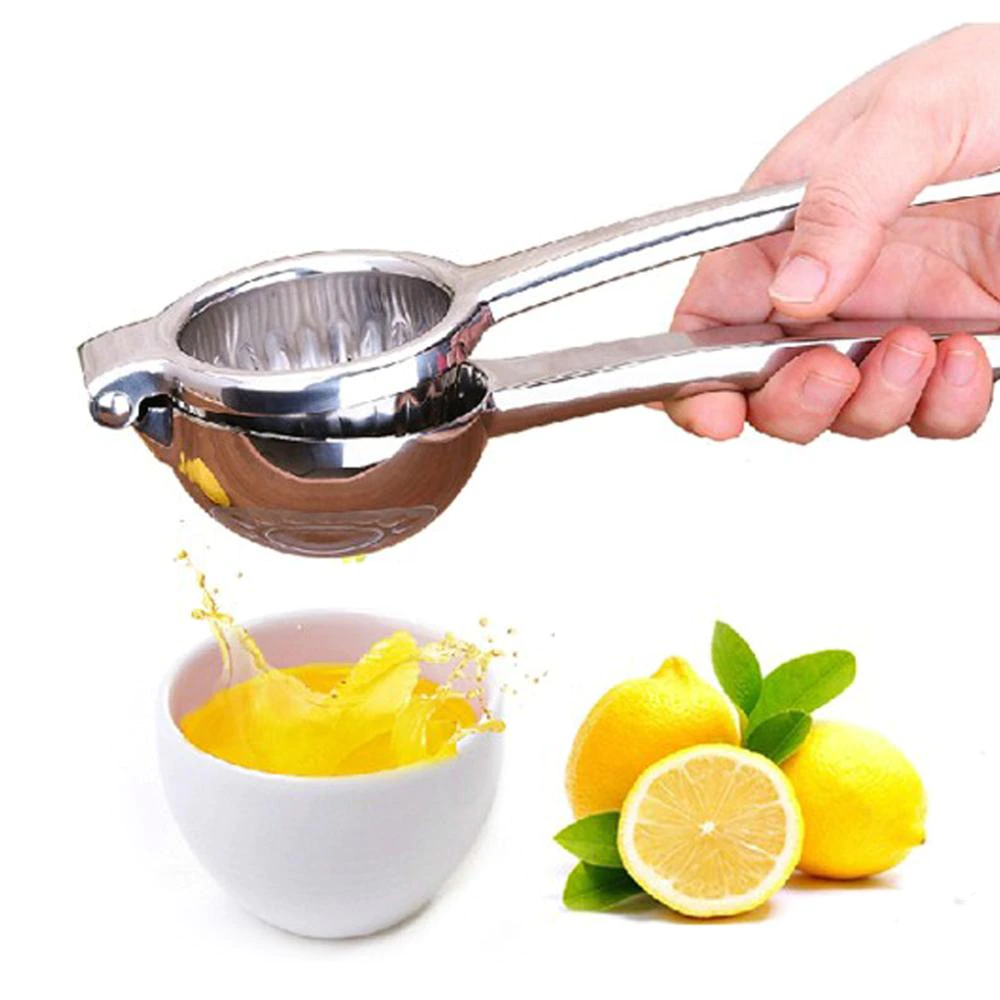






7 Comments
Pingback: Best Electric Juicers for Citrus Fruits - Blender Advisors
Pingback: Best Breville Juicers for Make Delicious Homemade Juice
Pingback: The Best Affordable Juicers of 2022 - Blender Advisors
Pingback: Best Omega Juicers Review and Buying guide - 2022 - Blender Advisors
Pingback: Best Hurom Juicers 2022 - Blender Advisors
Pingback: Breville BJE200XL Juice Fountain Compact Juicer Review
Pingback: Omega VRT350 Heavy Duty Vertical Low-Speed Juicer Review